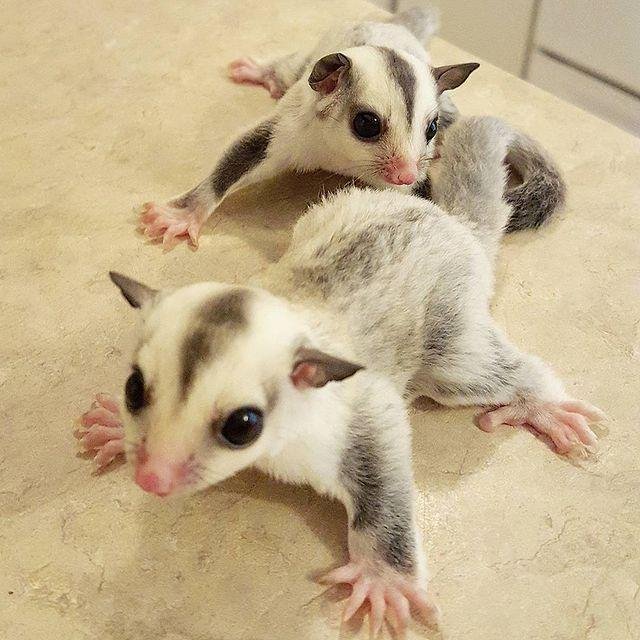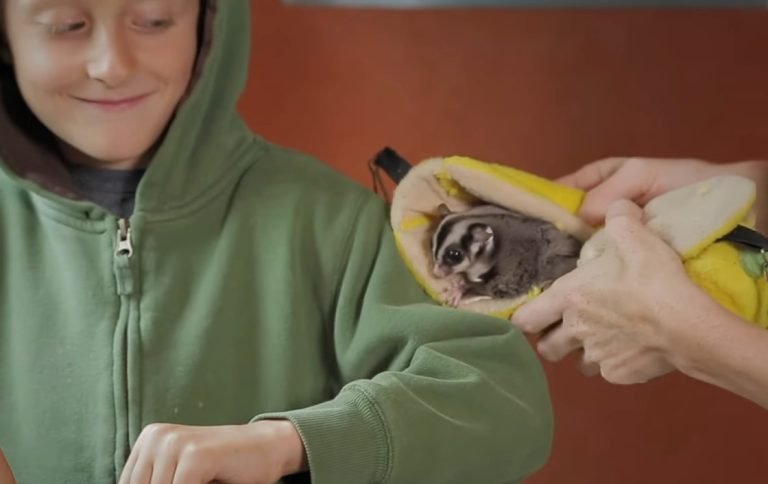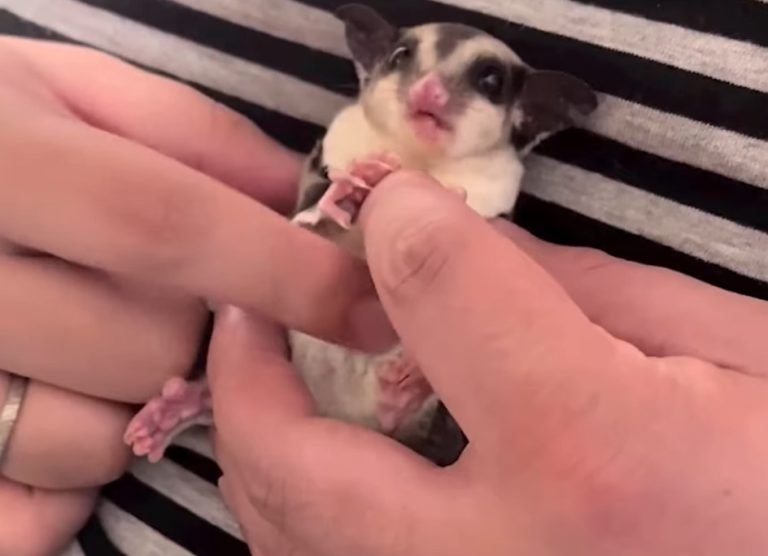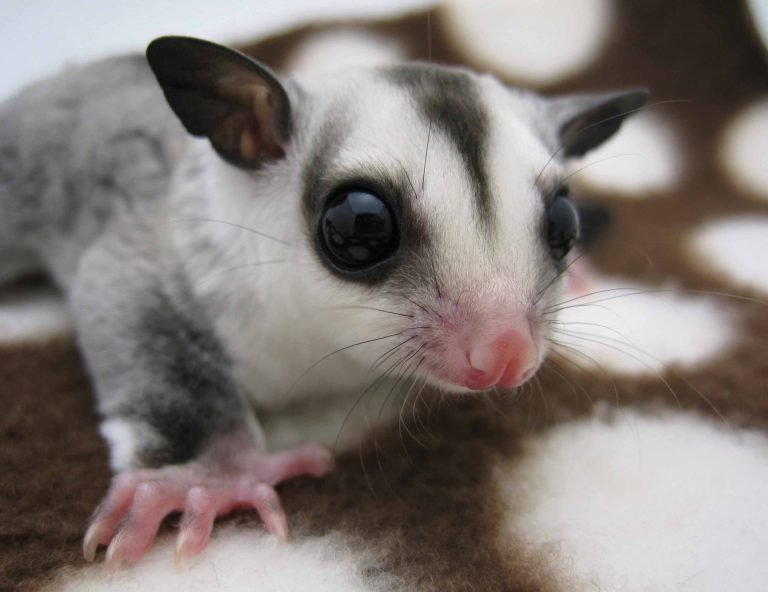How To Stop A Sugar Glider From Biting
Sugar gliders, those adorable little marsupials with their big eyes and fluffy tails, can be quite the handful. You might have experienced the sharp sting of their tiny teeth firsthand. But why do these sugar bears turn into aggressive gliders? Well, it turns out that biting is just a natural instinct for them. Various factors can influence their behavior, making it crucial to understand the reasons behind sugar glider biting if you want to put an end to it. By gaining insight into their peculiar ways, you’ll be better equipped to develop effective strategies and prevent those unexpected surprises. So let’s dive into the world of sugar gliders and discover how we can keep those bites at bay. Following this article, we will discuss how to stop a sugar glider from biting.
Sugar gliders are known for their unique behaviors, but understanding why they bite is key to addressing this issue head-on. With a little knowledge and some handy tips up your sleeve, you’ll soon learn how to stop even the most determined sugar from sinking its teeth into you. Let’s explore this fascinating topic further!
Reasons Behind Sugar Glider Biting
Biting is a common behavior in sugar gliders, and there are several reasons why they may engage in this behavior. Understanding these reasons can help you address the issue effectively. Here are some common reasons behind sugar glider biting:
- Fear or feeling threatened: Sugar gliders may bite when they feel scared or threatened. This can happen if they are handled too roughly or if they perceive a potential danger.
- Lack of socialization and bonding: A lack of socialization and bonding with their owners can contribute to aggressive behavior in sugar gliders. When they don’t feel comfortable around humans, they may resort to biting as a defense mechanism.
- Pain or discomfort: Sugar gliders with dental issues or other sources of pain or discomfort may exhibit biting tendencies. It’s essential to ensure their overall health and address any underlying medical conditions that could be causing them distress.
- Hormonal changes during mating season: Hormonal changes during mating season can also influence sugar gliders’ biting behavior. They may become territorial and more prone to aggression during this time.
By addressing these common reasons for sugar glider biting, you can work towards resolving the issue and promoting a healthier relationship with your pet. Remember to approach them with patience, understanding, and gentle handling to build trust over time.
Preventing Sugar Glider Bites: Creating a Stress-Free Environment
Providing a suitable habitat for your pet gliders is crucial in preventing them from biting. By ensuring they have ample space and enrichment, you can reduce their stress levels and promote a healthier bond with them.

To create a calm environment for your sugar gliders, it’s important to minimize loud noises and sudden movements. These can startle the gliders, leading to increased anxiety and potential biting behavior. Avoiding overcrowding in their cage and providing individual attention will contribute to their overall well-being.
Regular cleaning of the enclosure is essential to maintain hygiene and prevent irritability in your pet gliders. Dirty cages can lead to discomfort and stress, which may manifest as aggressive behavior such as biting.
When introducing your sugar gliders to their new home, consider starting with a small room rather than overwhelming them with a large space. This gradual transition allows them to acclimate gradually, reducing the likelihood of biting due to fear or confusion.
Positive Reinforcement: Discouraging Biting Behavior through Rewards
Rewarding good behavior with treats or praise reinforces positive interactions. By using this approach, you can effectively discourage your sugar glider from biting and promote a more harmonious bond between you and your pet.
- Consistency in rewarding non-biting behaviors encourages long-term change: When your sugar glider displays good behavior, such as refraining from biting, provide immediate positive reinforcement. Offer small treats that they enjoy or shower them with verbal praise. This consistent reward system helps them associate their actions with rewards, reinforcing the desired behavior over time.
- Using clicker training techniques helps associate desired actions with rewards: Clicker training is a popular method for training animals, including sugar gliders. By associating the sound of a clicker with rewards, you can effectively communicate to your pet when they exhibit desirable behavior. For instance, when your sugar glider refrains from biting or shows signs of friendliness, immediately click the device and follow it up with a treat or praise.
- Redirecting attention towards toys or activities diverts focus from biting: Sugar gliders may sometimes bite out of curiosity or boredom. To prevent this behavior, provide an array of engaging toys and activities to keep them occupied. When you notice them becoming nippy or aggressive, gently redirect their attention towards these distractions. This way, they will gradually learn that biting is not rewarded while interacting with toys and engaging in playful activities is encouraged.
By implementing these positive reinforcement techniques consistently and providing appropriate diversions for your sugar glider’s energy and curiosity, you can help deter biting behavior over time. Remember to be patient as it may take some time for your pet to fully grasp the desired behavioral changes. With patience and consistent effort on your part as their owner, you can foster a stronger bond while curbing unwanted biting habits in your sugar glider.
Techniques for Bonding and Reducing Biting in Sugar Gliders
Spending quality time daily with your sugar glider is crucial for building trust bonds. Gentle handling and cuddling help them feel secure and comfortable around you. Gradually introducing new experiences can also desensitize sugar gliders to fear triggers, reducing their tendency to bite out of anxiety.
To foster positive associations with human interaction, try offering treats from your hand. This not only encourages bonding but also reinforces the idea that being near you brings rewards. Patience is key when allowing sugar gliders to explore their surroundings at their own pace. By giving them the freedom to investigate without pressure, you can help reduce anxiety-related bites.
Remember to use a bonding pouch during these bonding sessions as it provides a safe space for your sugar glider while promoting closeness between both of you. This pouch acts as a cozy retreat where they can feel secure while gradually becoming more comfortable with human contact.
By following these techniques, you can establish a strong bond with your sugar glider while minimizing biting behavior. Remember, consistency and patience are essential throughout this process. With time and effort, you’ll be able to enjoy a trusting relationship with your furry friend.
Addressing Biting During the Teenager Phase
Sugar gliders, especially during their teenage phase, may exhibit more biting tendencies. This can be attributed to their young age and the increased energy they have. To address this behavior and ensure a harmonious relationship with your sugar glider, it’s important to follow these steps:
- Provide extra mental and physical stimulation: Sugar gliders need plenty of activities to channel their energy in a positive way. Offering toys, climbing structures, and interactive playtime can help keep them engaged and reduce the likelihood of biting.
- Consistent training and socialization: During the teenage phase, it is crucial to establish consistent training routines and socialize your sugar glider. This helps them understand boundaries and reinforces positive behaviors. Spend time bonding with your pet by gently handling them each day.
- Redirect attention from biting: When your sugar glider attempts to bite, redirect their attention by offering an appropriate alternative such as a toy or treat. This teaches them that biting is not acceptable behavior while providing an outlet for their natural instincts.
- Be patient and understanding: It’s important to remember that biting is often a result of fear or stress for sugar gliders. Approach interactions with patience and understanding, allowing them time to adjust to new environments or experiences.
- Seek professional advice if needed: If you’re struggling with excessive biting or aggression from your sugar glider, consider reaching out to a veterinarian or an experienced exotic pet trainer for guidance tailored specifically to your situation.
By following these steps during the teenager phase of your sugar glider’s development, you can help curb biting tendencies and foster a positive bond between you and your pet.
Key Takeaways for Stopping Sugar Gliders from Biting
In conclusion, stopping a sugar glider from biting requires understanding the reasons behind their behavior and implementing effective strategies. By creating a stress-free environment, you can prevent sugar glider bites and promote a healthier relationship with your pet. Positive reinforcement through rewards is an essential tool in discouraging biting behavior. Techniques such as bonding and reducing biting can help establish trust and minimize incidents.
During the teenager phase, it is crucial to address biting behavior promptly. This stage requires additional patience and consistency in training methods. Remember that building a strong bond takes time, so be prepared for gradual progress.
To ensure success in stopping sugar gliders from biting, consider the following key takeaways:
- Understand the reasons behind sugar glider biting to address the root cause effectively.
- Create a stress-free environment by providing adequate space, proper nutrition, and mental stimulation.
- Use positive reinforcement techniques to reward desired behaviors instead of focusing on punishment.
- Implement bonding exercises and interact regularly with your sugar glider to build trust.
- Be patient during the teenager phase and continue consistent training efforts.
By following these guidelines, you can establish a harmonious relationship with your sugar glider while minimizing biting incidents.
Remember that each sugar glider is unique, so adapt these strategies according to their individual needs for optimal results.
FAQs
1.How long does it typically take to stop a sugar glider from biting?
It varies depending on the individual sugar glider’s personality and previous experiences. With consistent training efforts, some owners have seen improvements within a few weeks or months.
2.Can neutering/spaying help reduce biting behavior in sugar gliders?
Yes, neutering or spaying can often help reduce aggressive tendencies in male sugar gliders by decreasing hormonal influences.
3. Are there any specific treats or toys that can discourage biting?
Sugar gliders enjoy a variety of treats and toys, including mealworms, fruits, and interactive puzzle toys. Experiment with different options to find what your sugar glider responds to positively.
4.What should I do if my sugar glider bites me?
If your sugar glider bites you, try not to react negatively or punish them. Instead, calmly remove yourself from the situation and give them time to calm down. Seek advice from a veterinarian or experienced sugar glider owner for further guidance.
5.Can socializing with other sugar gliders help reduce biting behavior?
Yes, socializing with other sugar gliders can provide opportunities for natural interaction and learning appropriate behaviors. However, introductions should be done gradually under supervision to ensure compatibility and prevent aggression.







